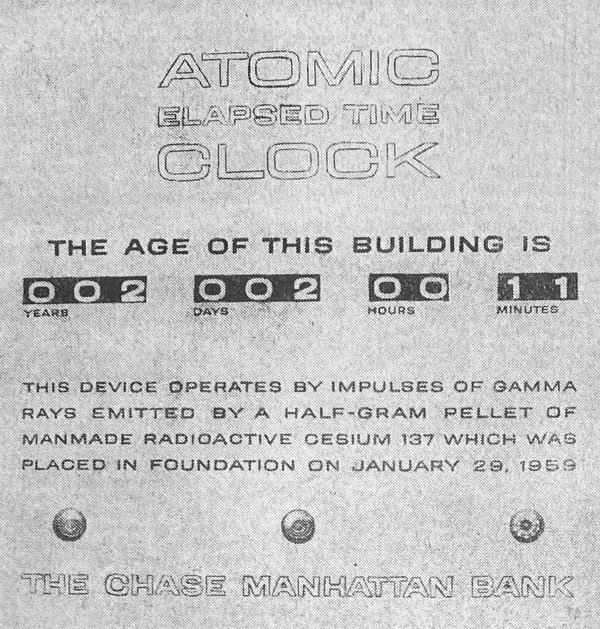Decaying clocks
This post was written by David Rooney
I need your help!
In the final chapter of my new book, About Time: A History of Civilization in Twelve Clocks, I tell the story of a plutonium timekeeper made by the Japanese electronics firms of Matsushita (now Panasonic) and Seiko in 1970 and buried in a time capsule beneath an Osaka park. It will keep time, and keep ticking, for 5,000 years.

A single gram of radioactive plutonium in the form of an oxide, wrapped in gold foil, steadily decays by alpha radiation, emitting helium nuclei into the clock’s gas chamber, which expands like an accordion’s bellows as a result. As the bellows expand, they pull the clock’s hand around the dial. You can read all about the Osaka time capsule project here.
I had never previously encountered radioactive clocks! I have spent several years studying the history of atomic clocks – the ones that use caesium, rubidium, or hydrogen – but these exploit resonance, not radioactive decay, as their time-base. So, I got interested in this new (to me) horological technology and have started digging further.
In 1959, the mayor of New York unveiled a clock at the Chase Manhattan Bank that uses gamma radiation from caesium-137 atoms to keep time. Each gamma ray detected by a Geiger tube sends a pulse of electricity to an amplifier and counter. Made by the US firm of Associated Nucleonics, it was claimed to be able to run for 200 years.

Six years later, the Benrus Watch Company filed a patent for a nuclear wristwatch using the beta radiation from technetium-99 or boron-10. In 1968, the Bulova Watch Company submitted plans for a clock that employed alpha radiation from plutonium-242, uranium-233 or neptunium-237. That one was apparently built. And in 1971, the Hamilton Watch Company’s parent body applied for a patent on an alpha-particle wristwatch using radium-226.
Here’s where I need help. Do you know of any other radioactive timekeepers, or more about the ones I’ve described here? Do you have any reference material, press cuttings, images or research reports that shed light on this novel technology? And is there a wider context I am missing – was the Chase Manhattan clock a PR exercise for the emerging civil nuclear industry, or is there a different explanation?
If you have any information about radioactive-decay clocks that you’d be happy to share with me, I’d love to hear from you. My contact details are on my website. Thanks!